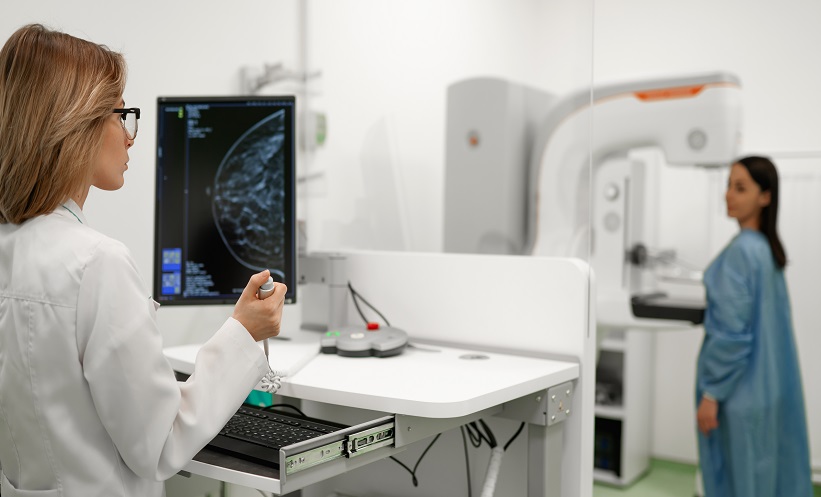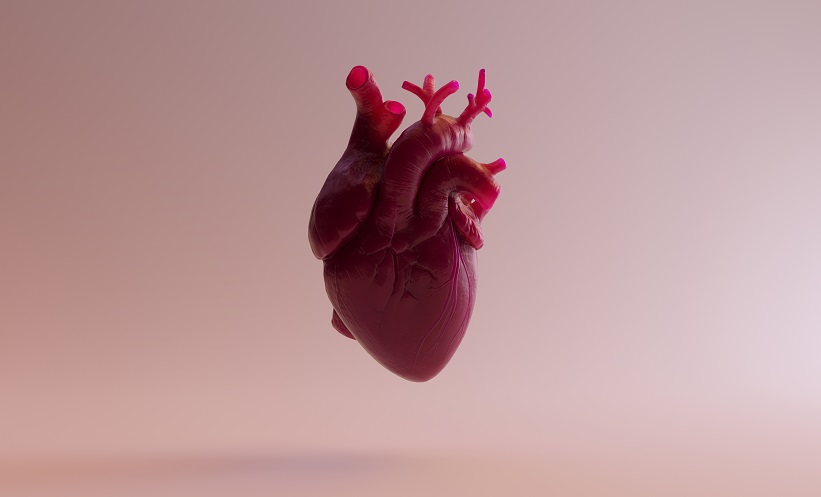THE OVERARCHING theme of the virtual European Congress of Radiology (ECR) Overture 2022 was ‘building bridges’. Taking place from 2nd–6th March 2022, this event was co-ordinated by the European Society of Radiology (ESR) as an exciting prelude to the main ECR, scheduled from 13th–17th July of this year in Vienna. With a scientific programme packed with late-breaking research in the form of poster presentations, round table discussions, and interviews with key opinion leaders in the field of radiology, the ECR Overture 2022 was not to be missed.
The event was opened by Regina Beets-Tan, President of the ESR, who began by addressing the rescheduling of the ECR Congress due to the ongoing challenges of the pandemic. She reassured however, that although presented with obstacles, these unprecedented times have also created opportunities; an apt statement demonstrated by the fantastic ECR Overture 2022. Beets-Tan introduced the audience to the ECR 2022 poster, which features the stunning ‘Flowers in a Wan-Li Vase, with Shells’ painting by Dutch artist Balthasar van der Ast, and added interspersed elements of DNA double helices. “Reflecting the elegance, life and vibrancy of the ECR,” as imparted by Beets-Tan, the array of flowers featured also promotes the diversity and inclusivity welcomed by the organisation, and represents her vision for radiology that will be shared in-depth during the July event.
Throughout the Overture, the importance of connecting, learning, and sharing knowledge was emphasised, with an aim of facilitating a mutual understanding of methods to perfect radiological practice. With a focus on multidisciplinary approaches and interactivity, which will also be a key focus of the July event, the ECR Overture 2022 hosted a plethora of engaging sessions over the 5-day period, all of which can be accessed on-demand by ESR members. Highlights came from a series of nine roundtable discussions, which aligned with the omnipresent theme of building bridges, and offered expert insights on key topics, while presenting the opportunity for audience participation. Some of the topics discussed included the role of interventional oncology in cancer care, cutting-edge sustainable ‘green’ radiology, and opportunities for multidisciplinary training to create a stronger dialogue between radiologists and patients. Topical sessions on the impact of COVID-19 on screening programmes also took place. This prompted discussion on cancer screening adaptations implemented during the pandemic, including the emergence of new technologies to optimise this process, and minimise patient exposure to COVID-19.
Alongside this interactivity, the ECR Overture 2022 offered a collection of trailer sessions, which gave viewers a taste of what to expect from the open-session forum in July. A standout session, the ‘Young ECR Open Forum’, saw renowned radiology professors share their insights, together with advice and visions for the future, to young radiologists and clinicians. Young members of radiology organisations also shared their perspectives on the ever-developing role of a radiologist, with an eye to multidisciplinary approaches. Sessions such as these are crucial steps into redefining the future of radiology, which will facilitate the strengthening of performance, practice, and the profession as a whole.
The closing ceremony saw Beets-Tan reiterate the importance of building bridges, emphasising that the ECR Overture 2022 has been a vehicle for sparking an active dialogue with ESR partners for a bright future for radiology, where young radiologists will play a fundamental role. Award-winners for the best late-breaking abstracts and research posters have been announced, but are yet to be presented; this will be included as an exciting segment that will take place in the hybrid event. The ESR President expressed that, with over 100 clinical speakers, the ECR Congress 2022 will be a congress of modern times, which the overture certainly showcased to attendees. “Together we will build, together and united,” said Beets-Tan, encompassing the powerful and inclusive theme of the ESR, and captivating audiences ahead of the hybrid congress. Engaging scientific highlights from the ECR Overture 2022 follow for those who could not attend this coveted event, and we look forward to the ESC Congress 2022 in Vienna this coming July.
Optimising MRI Examinations for Individuals with Autism
THE MRI environment poses a number of challenges for people with autism spectrum disorder. In part, this is due to current screening practices, which do not take into account the needs of MRI service users with autism. To overcome this issue, Nikolaos Stogiannos, City, University of London, UK, and Corfu General Hospital, Greece, and collaborators investigated barriers and facilitators to implement inclusive and safe MRI scans when examining adults or children with this neurodevelopmental disorder. The results from this study were shared at ECR Overture 2022 on 4th March.
Data collection was achieved using two online surveys: one for individuals aged 16 years or over with autism, and the other for the parents or carers of people with autism, with prior MRI experience. The snowball sampling technique was employed. The surveys, which stayed open between 1st February– 30th April 2021, were distributed through the researchers’ networks and the autistic community on Facebook, LinkedIn, Twitter, the National Autistic Society, and the London Autism Group. Involvement from both patients and the public was employed throughout all stages of the project.
Overall, 128 valid responses were received: 112 from adults with autism, and 16 from the parents or carers of children with autism. Based on the collected data, lack of effective communication either among healthcare services or between practitioners and their patients was shown to be the main barrier to a successful MRI procedure. Interestingly, non-disclosure of autism occurred in 53.6% of the responses. The key factors associated with negative patient experiences were failure to provide customised MRI examinations or autism-compatible MRI environments with reasonable adjustments.
It is important to note that study design, research methodology, and recruitment of participants were affected by COVID-19 restrictions. The results of convenience samples should be interpreted with caution.
Going forward, optimal communication and team interactions as well as MRI environment adjustments will facilitate the provision of inclusive scanning practices.
Machine-Learning Models Predict Response to Neoadjuvant Chemotherapy
VALUABLE findings about machine-learning (ML) were brought forward by research at the ECR Overture 2022, taking place between 2nd–6th March 2022. Panagiotis Kapetas, Medical University of Vienna, Austria, presented this research. Using clinical and radiomic features from baseline B-mode breast ultrasound (US) in combination with ML models, investigators were able to predict patient responses to neoadjuvant chemotherapy (NAC).
This study has significant value for practicing clinicians, and is of particular interest to patients with cancer who are beginning their treatment, weighing up their risk profiles with NAC. The retrospective, monocentric research revealed evidence that adds to the expanding literature on ML, where we will no doubt see continued growth and applications to practice in the near future. This study involved 253 patients with invasive breast cancer and undergoing NAC, with one B-mode US image of each tumour from baseline examination selected. Tumours were manually segmented and a total of 851 radiomic features were extracted, with two analyses performed on this dataset. First, principal component analysis was conducted for feature reduction and a multilayer perceptron neural network was trained using the remaining radiomic and selected clinical features, one third of cases were used as an external validation set. Second, a decision tree was applied, using the exhaustive chi-squared automatic detection method with 10-fold cross-validation and postoperative histology as the reference standard.
Diagnostic performance from this methodology was evaluated by looking at the area under the receiver operating characteristic curve, and researchers found 104 patients (41.1%) achieved a pathological complete response. In the first model run, combining radiomic features, age, and molecular subtype, presented the highest area under the curve, for both regions of interest without (ROI1) and including tissue surrounding the tumour (ROI2). The model resulted in 66.3% correct classifications for ROI1 and 55.4% in the ROI2 validation set. Decision trees based on molecular subtype and 5–6 radiomic features showed an area under the curve of 0.852 (95% confidence interval: 0.802–0.893) for ROI1 and 0.896 (95% confidence interval: 0.852–0.931) for ROI2 (p>0.05).
Kapetas and his fellow researchers concluded that ML models based on radiomic features from baseline B-mode breast US and simple clinical features have the potential to predict the response to NAC, on the back of their correct classifications of 83.4% in ROI1 and 82.6% for ROI2. He did acknowledge that there was a limited patient number in this investigation, and that further study is warranted for conclusions to carry greater weight; however, this topic undoubtedly offers an exciting application for ML and will transition soon into clinical practice.
CT-based Body Composition Profiling May Predict Chemotoxicity
OVARIAN cancer (OC) is the fifth cause of cancer death in the female population in developed countries, and the most lethal gynaecological malignancy. Commonly, the first line of treatment for OC involves cytoreductive surgery, followed by platinum-based chemotherapy. Additionally, CT is a useful imagining technique employed at many different phases of diagnosis and treatment, from staging procedures and preoperative evaluations to patient follow-ups. A study presented at the ECR Overture 2022 explored how CT-based quantitative measurements of body composition profiling may predict chemotherapy-related complications in patients with OC, in terms of dose reduction, early discontinuation of chemotherapy, and cycle delays.
The research involved 69 patients with newly diagnosed OC, retrospectively selected from a database, whose CT-based body composition profiling was extracted from CT images at the level of the third lumbar vertebra. The quantitative measures recorded were skeletal muscle area, subcutaneous adipose tissue, skeletal muscle density, and visceral adipose tissue. Additionally, the lumbar skeletal muscle index (SMI) was calculated as a measure of sarcopenia, defined as the skeletal muscle loss that occurs secondarily to a systemic disease such as cancer.
The results of the study show a significant association between visceral adipose tissue and cycle delays, between skeletal muscle area and early discontinuation of chemotherapy, and between skeletal muscle density and cycle delay. However, the study found no association between sarcopenia and worst survival rates in their cohort of patients with OC. Such results represent an important finding that could help design interventions to be introduced at diagnosis, such as a combination of physical activity, nutrition, and vitamin D supplementation to increase muscle strength and muscle mass. Future studies, which include pharmacokinetic data, might be needed to further elucidate the association between body composition and chemotoxicity.
Bias of Chest X-ray Classification Algorithm
ARTIFICIAL intelligence (AI) algorithms can develop biases based upon the composition of training data used. Presented at the ECR Overture 2022 on 4th March 2022, this research evaluated the bias that deep learning-based classification algorithms can have on chest X-rays with regard to age, gender, and manufacturer.
A total of 632 chest X-rays were chosen (male: 376; female: 256), randomised, and selectively anonymised; however, the fields required for bias estimation were included (age, gender, and manufacturer). The X-rays were performed by machines manufactured by six different companies: Agfa (388 [Mortsel, Belgium]), Carestream (45 [Rochester, New York, USA]), DIPS (21 [Bodø, Norway]), GE Healthcare (31 [Niskayuna, New York, USA]), Philips (127 [Amsterdam, the Netherlands]), and Siemens Healthcare (20 [Erlangen, Germany]). As the chest X-rays performed by Agfa machines had a dominance of male patients (aged 60–80 years), this was considered the baseline for the evaluation of bias towards all classes. The metrics for false omission rate (FOR) and false negative rate (FNR) were used to calculate bias scores.
The X-rays were run through an open-sourced X-ray classification model and then an open-sourced python-based package was used to analyse the results for bias (Aequitas [University of Chicago, Illinois, USA]). The results of this analysis showed that there were significant disparities in the FOR and FNR from all X-rays, excluding Siemens. However, there was no gender disparity. All groups illustrated that there was a FNR parity, while all classes showed disparity in regard to the FOR for age.
However, this research is limited by the number of pathological classes that were evaluated. As a result, the researchers recommend that a bias evaluation check be carried out as a part of any project that involves AI. However, AI algorithms can still develop biases that can be difficult to evaluate.








